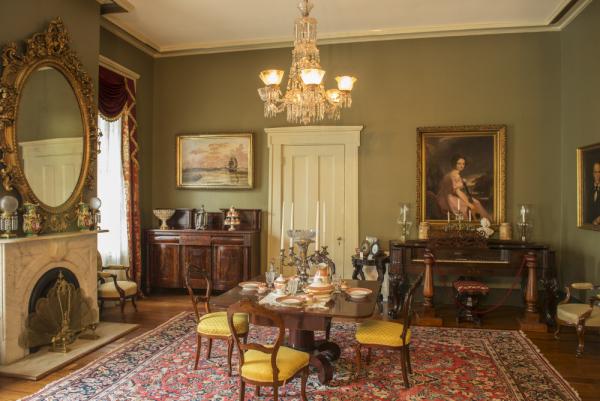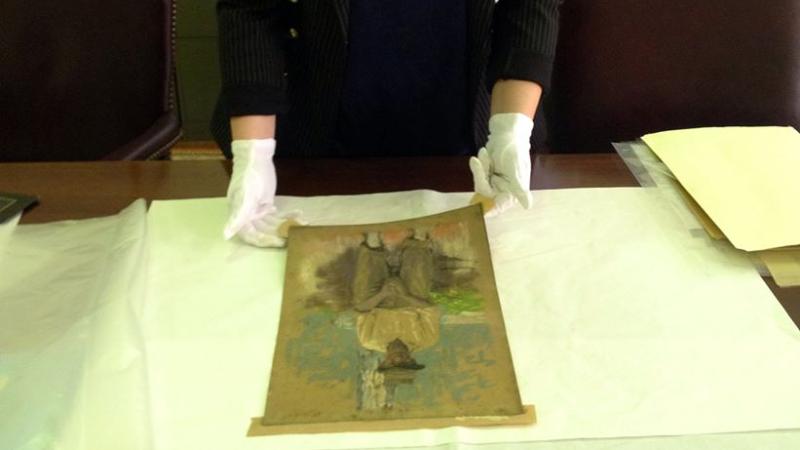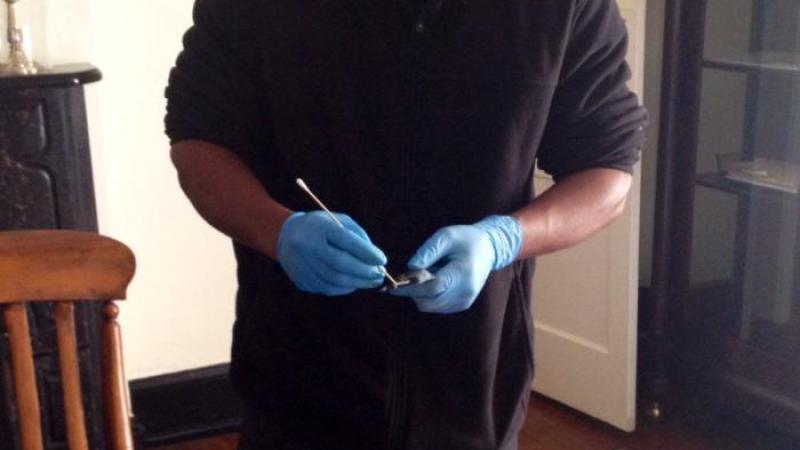50 States of Preservation: Historic Mobile Preservation Society in Mobile, Alabama

Parlor of Oakleigh House. Note the 1833 Thomas Sully portrait of Madam Octavia Walton LeVert (1811-1877), American socialite and prominent southern writer.
Image property of the Historic Mobile Preservation Society.

Parlor of Oakleigh House. Note the 1833 Thomas Sully portrait of Madam Octavia Walton LeVert (1811-1877), American socialite and prominent southern writer.
Image property of the Historic Mobile Preservation Society.
This feature is part of a series we call “50 States of Preservation,” in which we are touring small and mid-sized museums, libraries, historical societies, and other repositories across the country to show how they are helping to preserve the nation’s cultural heritage. Read other entries in the series here.
When cotton broker James W. Roper built his Greek revival-style mansion on the outskirts of Mobile, Alabama, in 1833, the city already had a long history. The first capital of colonial French Louisiana, the port city had hosted the first Mardi Gras Carnival celebration in the United States in 1703, presented by the city’s prolific mystic societies. Nineteenth-century Mobile would witness the rise of King Cotton, urban slavery, railroad development, deadly epidemics, the Civil War, and emancipation. Roper’s mansion, now called Historic Oakleigh House, and the associated Minnie Mitchell Archives tell the story of both Mobile’s upper middle class and the enslaved men and women in the antebellum South.
With support from the NEH’s Division of Preservation and Access, the Historic Mobile Preservation Society (HMPS) is working to preserve its collections of historic objects, documents, and photographs, which are viewed by the 4,000 visitors Oakleigh House gets each year from all 50 states and numerous countries. “The NEH Preservation Assistance Grant has been a lifeline to the future of our collection,” said HMPS Public Historian Melanie Thornton. “With over 1,150 artifacts and roughly 12,500 archival items, the collection is representative of various time periods of Mobile’s history, with the primary focus on 1840-1860.”
An NEH Preservation Assistance Grant funded a general preservation assessment by conservation specialists Thomas and Dawn Heller. Heller Conservation Services recently visited the historic house and archives and will provide an in-depth assessment and recommendations for preservation. “We are looking forward to the results of the assessment so we can move to the next phases of collections care,” explains Thornton. The effort will help preserve collections, which are a prime resource for scholars, students, authors, and historians. In addition, Thornton describes university partnerships, stating that the collection is “integral to post-secondary humanities education in Mobile.”
Oakleigh House displays an 1833 Thomas Sully portrait of Madam Octavia Walton LeVert (1811-1877), an American socialite and one of the first female southern writers to achieve national recognition, whose portrait is pictured hanging over the piano above. Other highlights of the house collections are a hair wreath made by Confederate soldiers, a Victorian mourning jewelry collection, a complete 1856 Haviland Limoges china set, an 1820s English Mahogany supper table, two matching Satsuma vases, and numerous portraits. Their African American history collection includes an effigy jug, a manilla (copper bracelet used as money), and handmade tools and artifacts, as well as watercolor and pastel sketches.
Because of Mobile’s role in hosting the first Mardi Gras, the Minnie Mitchell Archives hold a large collection of Mardi Gras and mystic society documents. They also house colonial-era French, Spanish, British, and Civil War maps of Mobile, the first edition of the Mobile Commercial Register from 1821, the log book of the steamer S.E. Meaher, and early 19th-century newspapers. The William E. Wilson Photographic Collection has over 2,000 original glass negatives documenting the history of the city from 1894 to 1905. Finally, archival materials also include the correspondence of Mobile socialite and writer Octavia LeVert, with letters from Henry Clay, Washington Irving, and Edgar Allen Poe; the correspondence of Thomas Kilshaw Irwin, who purchased the Oakleigh House, sent to his wife Mary before and during the Civil War, illuminating the stresses of war on a marriage; and 40 years of minutes from the Protestant Orphan Asylum, one of the largest benevolent societies in the South.
In every state, NEH supports organizations that preserve humanities collections. Preservation Assistance Grants for Smaller Institutions (PAGs) fund projects that help safeguard photographs, letters, documents, prints, moving images, sound recordings, maps, drawings, artworks, textiles, furniture, and artifacts, making them available for future generations. These collections help researchers, educators, and members of the public better understand the complex stories of the various cities, towns, and tribal groups that make up our nation. Since 2000, NEH has made nearly 2,000 Preservation Assistance Grants to small and mid-sized organizations to preserve and care for their humanities collections. In all 50 states, the District of Columbia, and Puerto Rico and the Virgin Islands, PAG awards have funded preservation assessments, purchase of shelving, environmental monitoring equipment, and preservation supplies, and training for staff. Organizations in all states and U.S. territories are eligible to apply, and the program encourages applications from those new to NEH. The next application deadline Preservation Assistance Grants for Smaller Institutions is May 2, 2017. If you have any questions about this grant program, please contact us at @email or 202-606-8570.









